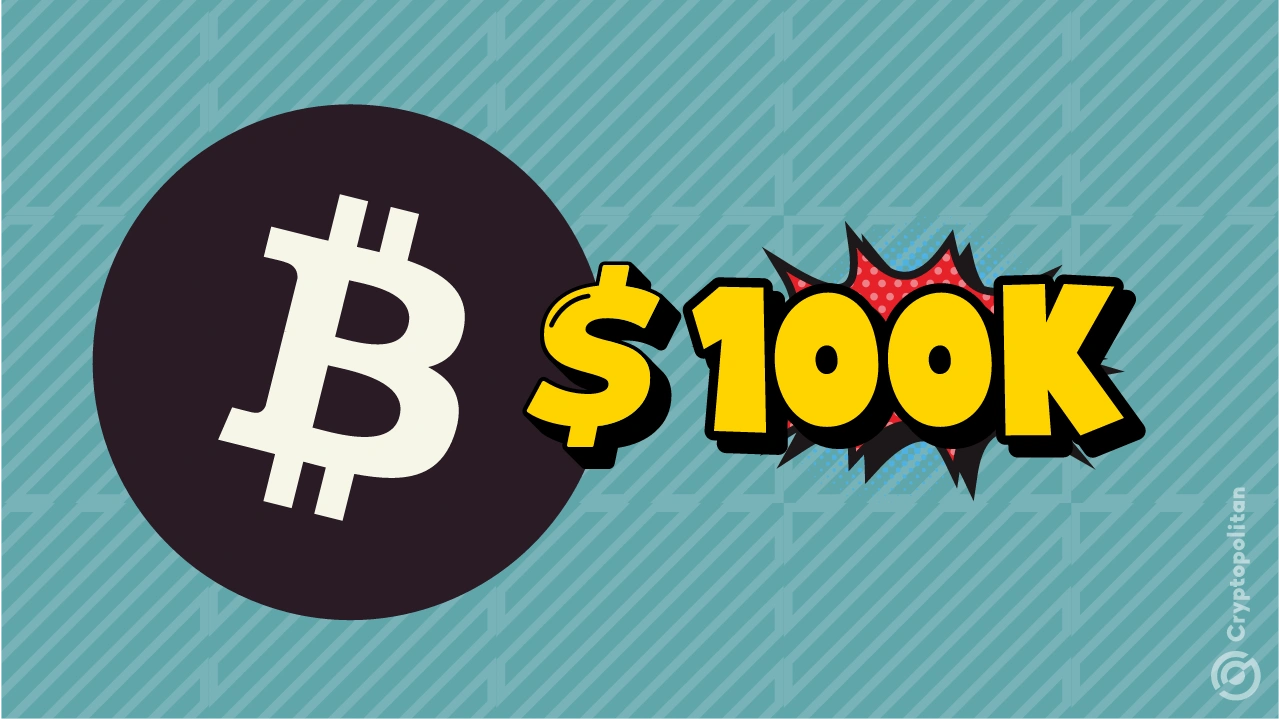Bitcoin is teasing $100,000 again. Early last week, the price hit $99,000, just a hair’s breadth from the magical six figures. Then predictably, the market did what it does best: it corrected.
Prices slid to $95,600, and the excitement shifted to cautious optimism. Investors, analysts, and keyboard warriors everywhere are asking the same thing: is Bitcoin finally breaking through, or will the $100,000 mark stay out of reach until next year?
The last time Bitcoin was this close to six figures, it fizzled out. Now, the stakes are higher. Options on spot Bitcoin ETFs launched recently, adding to the speculation. Traders with limited cash can now leverage Bitcoin’s movements without directly buying it.
While this adds fire to the rally, it also raises risks. As Mike Novogratz of Galaxy Digital put it, “The crypto community is levered to the gills.”
Markets react
While Bitcoin hogged the spotlight, global markets weren’t sitting idle. Europe’s Stoxx 600 index climbed 0.46%, boosted by optimism despite a slight pullback later in the day. Across the pond, U.S. markets took a holiday breather for Thanksgiving, leaving traders out of action during Bitcoin’s dramatic price movements.
One European standout was Direct Line Insurance. Its stock skyrocketed 41.4%, the highest since early 2023, after rejecting a takeover offer from Aviva. The company called the bid “substantially undervalued,” and investors seemed to agree.
Elsewhere, Morgan Stanley changed its view on European equities, calling it “a stock picker’s market” with significant potential for gains if traders focus on the right plays.
Meanwhile, the semiconductor world was on fire. Stocks like ASML and Tokyo Electron surged on reports of a softer-than-expected U.S. export ban targeting Huawei suppliers. The rumored restrictions would blacklist fewer companies than initially feared, triggering relief rallies among global chipmakers.
Why does this matter to Bitcoin? Because the crypto world depends on advanced chips for mining. Easing export rules could stabilize the semiconductor supply chain, indirectly supporting mining operations.
China and Russia stir the pot
China added to the week’s financial market drama by announcing tighter tungsten export controls starting this weekend. Tungsten, a critical material used in both military and civilian applications, is about to get harder to source.
With China controlling 80% of the global tungsten supply chain, companies are scrambling to reopen dormant mines and boost production elsewhere.
Russia brought its own chaos. The ruble tumbled to 114 against the dollar, its weakest since March 2022, right after the Ukraine invasion. Russia’s central bank tried to calm the waters, halting foreign currency purchases on domestic markets until the end of the year.
Their goal? Reduce market volatility. But it just highlights the fragility of traditional currencies in turbulent times, which is exactly why Bitcoin keeps drawing attention as a hedge.
Right now, Russia’s parliament is waiting for president Vladimir Putin’s signature to officially approve the recognition of Bitcoin as property, exempt from VAT.
Will Bitcoin crack the code for $100,000?
The $100,000 question—literally—is whether Bitcoin has the momentum to break through. Analysts are split. Andre Dragosch of Bitwise pointed out that long-term holders have been offloading significant amounts of Bitcoin into the rally, increasing supply and creating downward pressure.
David Morrison from Trade Nation called $100,000 “a high hurdle, if not a barrier.” He’s not alone. The psychological weight of a six-figure Bitcoin has traders second-guessing their moves.
On the flip side, there’s no shortage of bullish takes. Crypto analyst Ali Martinez highlighted $93,580 as a critical support level. “If Bitcoin holds above this, we’re heading back to $99,000,” he said.
PlanB, the mind behind the Stock-to-Flow model, believes historical patterns point to Bitcoin smashing through six figures sooner than skeptics expect. On-chain data from Willy Woo also suggests that supply shortages are creating a perfect storm for upward momentum.
Institutional interest is another wildcard. Tom Lee of Fundstrat thinks a holiday-season surge in institutional investments could push Bitcoin past $100,000. Meanwhile, MicroStrategy’s Michael Saylor has gone full Bitcoin maximalist.
He argues that the apex crypto’s fundamentals are stronger than ever, with corporate adoption acting as a key driver. Love him or hate him, Saylor’s influence on institutional investors is hard to ignore.
Not everyone is convinced. George Milling-Stanley of State Street dismissed Bitcoin’s rally as a “return play,” arguing that traders are chasing quick gains rather than real utility. Cathy Wood of ARK Invest remains one of the most bullish voices, predicting a $500,000 Bitcoin by 2026.
Then there’s the Trump factor. If the US president delivers on even a fraction of his promises, it could be enough to catapult Bitcoin beyond $100,000 or even $150,000. But let’s not forget, promises are cheap, and politics is a messy, brutal business. Whether Trump follows through remains to be seen.
A Step-By-Step System To Launching Your Web3 Career and Landing High-Paying Crypto Jobs in 90 Days.





